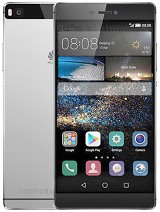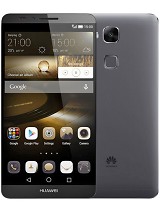Compare
Specifications
Huawei P8 |
Huawei Ascend Mate7 |
|
|
Full
Differences
Change compare mode
|

|

|
Huawei P8 |
Huawei Ascend Mate7 |
| Network | ||
|---|---|---|
| Technology | GSM / HSPA / LTE | GSM / HSPA / LTE |
| 2G bands | GSM 850 / 900 / 1800 / 1900 - SIM 1 & SIM 2 | GSM 850 / 900 / 1800 / 1900 |
| GSM 850 / 900 / 1800 / 1900 - SIM 1 & SIM 2 - MT7-TL10 | ||
| 3G Network | HSDPA 850 / 900 / 1700 / 1900 / 2100 - UL00 | HSDPA 850 / 900 / 1700 / 1900 / 2100 |
| HSDPA 800 / 850 / 900 / 1700 / 1800 / 1900 / 2100 - L09 | HSDPA 850 / 900 / 1900 / 2100 - MT7-TL10 | |
| TD-SCDMA - MT7-TL10 | ||
| 4G Network | 1, 3, 4, 7, 38, 39, 40, 41 - UL00 | 1, 2, 3, 4, 5, 7, 8, 20, 28, 40 |
| 1, 2, 3, 4, 5, 7, 8, 12, 17, 18, 19, 20, 25, 26, 28, 40 - L09 | 1, 3, 7, 38, 39, 40, 41 | |
| Speed | HSPA 42.2/5.76 Mbps, LTE (2CA) Cat6 300/50 Mbps | HSPA 42.2/5.76 Mbps, LTE Cat6 300/50 Mbps |
| Launch | ||
|---|---|---|
| Announced | 2015, April. Released 2015, April | 2014, September. Released 2014, October |
| Status | Discontinued | Discontinued |
| Body | ||
|---|---|---|
| Dimensions | 144.9 x 72.1 x 6.4 mm (5.70 x 2.84 x 0.25 in) | 157 x 81 x 7.9 mm (6.18 x 3.19 x 0.31 in) |
| Weight | 144 g (5.08 oz) | 185 g (6.53 oz) |
| Build | Glass front (Gorilla Glass 3), glass back (Gorilla Glass 3), aluminum frame | Glass front (Gorilla Glass 3), aluminum back, aluminum frame |
| SIM | Hybrid Dual SIM (Nano-SIM, dual stand-by) | Micro-SIM Hybrid Dual SIM (Micro-SIM/Nano-SIM) - MT7-TL10 |
| Display | ||
|---|---|---|
| Type | IPS-NEO LCD | IPS LCD |
| Size | 5.2 inches, 74.5 cm2 (~71.4% screen-to-body ratio) | 6.0 inches, 98.7 cm2 (~77.6% screen-to-body ratio) |
| Resolution | 1080 x 1920 pixels, 16:9 ratio (~424 ppi density) | 1080 x 1920 pixels, 16:9 ratio (~368 ppi density) |
| Protection | Corning Gorilla Glass 3 | Corning Gorilla Glass 3 |
| Platform | ||
|---|---|---|
| OS | Android 4.4.2 (KitKat), upgradable to 6.0 (Marshmallow), EMUI 3.1 | Android 4.4.2 (KitKat), upgradable to 6.0 (Marshmallow), EMUI 3.1 |
| Chipset | Kirin 930 (28 nm)/ Kirin 935 (28 nm) | Kirin 925 (28 nm) |
| CPU | Octa-core (4x2.0 GHz Cortex-A53 & 4x1.5 GHz Cortex-A53) | Octa-core (4x1.8 GHz Cortex-A15 & 4x1.3 GHz Cortex-A7) |
| GPU | Mali-T628 MP4 | Mali-T628MP4 |
| Memory | ||
|---|---|---|
| Card slot | microSDXC (uses shared SIM slot) | microSDXC (uses shared SIM slot) |
| Internal | 16GB 3GB RAM, 32GB 3GB RAM, 64GB 3GB RAM | 16GB 2GB RAM, 32GB 3GB RAM |
| Main Camera | ||
|---|---|---|
| Modules | 13 MP, f/2.0, 28mm (wide), 1/3.1", 1.12µm, AF, OIS | 13 MP, f/2.0, 28mm (wide), AF |
| Features | Dual-LED dual-tone flash, panorama, HDR | LED flash, HDR, panorama |
| Video | 1080p@30fps | 1080p@30fps |
| Selfie Camera | ||
|---|---|---|
| Modules | 8 MP, f/2.4, 26mm (wide) | 5 MP, f/2.4, 22mm (wide) |
| Video | 1080p@30fps | 720p |
ADVERTISEMENT
| Sound | ||
|---|---|---|
| Loudspeaker | Yes | Yes |
| 3.5mm jack | Yes | Yes |
| 24-bit/192kHz audio |
||
| Comms | ||
|---|---|---|
| WLAN | Wi-Fi 802.11 a/b/g/n, Wi-Fi Direct, DLNA | Wi-Fi 802.11 a/b/g/n, dual-band, DLNA, Wi-Fi Direct |
| Bluetooth | 4.1, A2DP, LE | 4.0, A2DP, EDR, LE |
| Positioning | GPS, GLONASS/ BDS (market dependant) | GPS, GLONASS |
| NFC | Yes | Yes |
| Infrared port | No | No |
| Radio | FM radio | FM radio |
| USB | microUSB 2.0, OTG | microUSB 2.0, OTG |
| Features | ||
|---|---|---|
| Sensors | Accelerometer, gyro, proximity, compass | Fingerprint (rear-mounted), accelerometer, gyro, proximity, compass |
| Battery | ||
|---|---|---|
| Type | Li-Po 2680 mAh, non-removable | Li-Po 4100 mAh, non-removable |
| Stand-by | Up to 648 h (3G) | |
| Misc | ||
|---|---|---|
| Colors | Titanium Grey, Mystic Champagne (16 GB model) Carbon Black, Prestige Gold (64 GB model) |
Obsidian black, Moonlight silver, Amber gold | SAR | 1.41 W/kg (head) 1.23 W/kg (body) |
| SAR EU | 0.47 W/kg (head) 1.72 W/kg (body) | |
| Models | GRA-UL00, GRA-L09, GRA-UL10, GRA-TL00, GRA-CL10 | MT7-TL00, MT7-L09, MT7-TL10, MT7-CL00, MT7-UL00, MT7-J1 |
| Price | About 230 EUR | About 340 EUR |
| Tests | ||
|---|---|---|
| Performance | Basemark OS II 2.0: 1112Basemark X: 6307 | Basemark OS II 2.0: 849Basemark X: 6501 |
| Display | Contrast ratio: 1516 (nominal), 2.196 (sunlight) | Contrast ratio: 1428:1 (nominal), 2.024 (sunlight) |
| Camera | Compare PHOTO / Compare VIDEO | |
| Loudspeaker | Voice 66dB / Noise 66dB / Ring 68dB | Voice 66dB / Noise 65dB / Ring 75dB |
| Audio quality | Noise-91.5dB / Crosstalk -93.5dB | Noise -91.0dB / Crosstalk -82.5dB |
| Battery (old) | Endurance rating 64h | Endurance rating 67h |